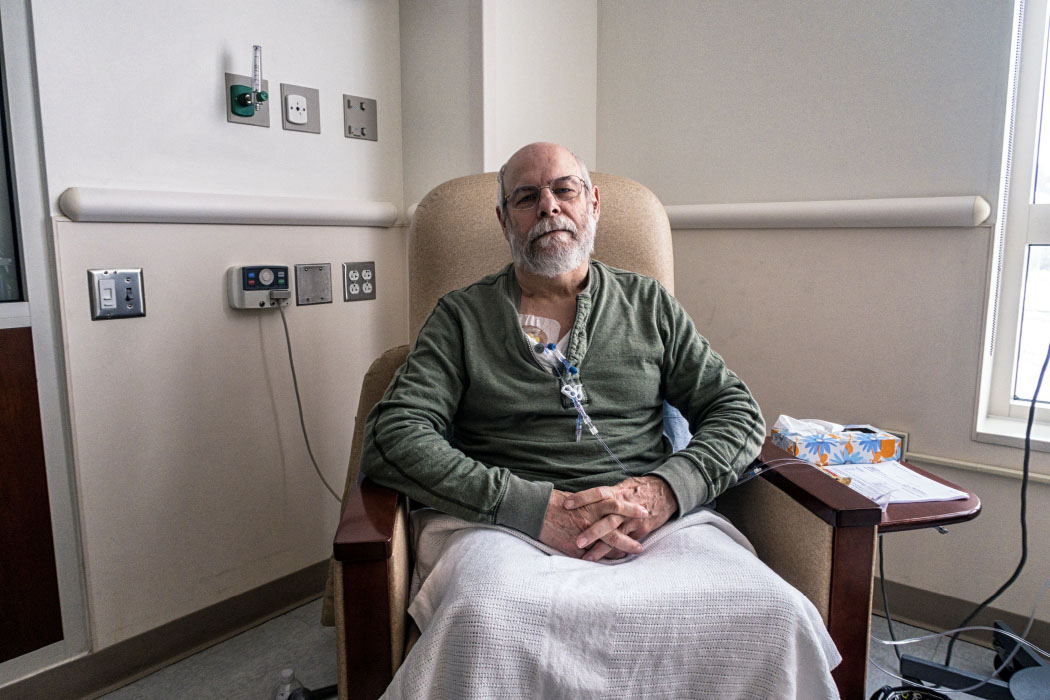Stigma is a deep-seated social construct that “profoundly discredits an individual or a group from being whole, causing them to be viewed as less desirable, harmful, or weak.” It infiltrates all corners of society, but when experienced in health care, it can contribute to health inequities and poor health-related outcomes.
In two articles in the February 2024 issue of the Clinical Journal of Oncology Nursing (CJON), ONS member Gretchen A. McNally, PhD, ANP-BC, AOCNP®, explored stigma and discrimination in clinical oncology practice. In the first article, she presented the evidence base, identified a framework, and reviewed measurement tools and interventions. For the second article, she partnered with colleagues to present three case studies that illustrate specific scenarios where oncology nurses can apply her findings in clinical practice.
Stigma in Oncology Care
Cancer stigma is a significant barrier to accessing care, McNally said. “People experiencing or anticipating cancer-related stigma are more likely to hide their diagnosis and delay care in anticipation of negative judgments about their physical appearance, poor prognosis, or blame for their disease. Stigma may facilitate distress and isolation, and may adversely affect cancer treatment, mental health, and social functioning.”
Through a comprehensive clinical literature review, McNally identified the following foundational concepts related to stigma in cancer care.
Key factors: Current evidence points to male gender, lower income, and lung and cervical cancer diagnoses as factors linked to higher levels of cancer stigma, McNally reported.
Impact on patients: Patients with cancer who experience stigma have poor quality of life, more severe symptoms, higher levels of depression and anxiety, poorer self-efficacy, and more shame and self-blame, McNally said.
Impact on healthcare professionals: Additionally, McNally found that stigma can deteriorate communication among clinicians, patients, and support systems but that patient–provider communication interventions may decrease patients’ cancer stigma and distress and improve their quality of life.
A Framework to Recognize Health Stigma and Discrimination
Individuals have multiple intersecting identities—race, gender, disease, social determinants of health, and so on—that influence their health behaviors and physical and mental well-being. The isolation and inequities associated with stigma may lead to worse health behaviors and outcomes, but shared identities can mitigate stigma, McNally said.
Through her literature review, McNally discovered the Health Stigma and Discrimination Framework, a multilevel socioecologic model that “acknowledges intersecting identities, shifting the focus from stigma as a thing to stigma as a complex construct involving broader social, cultural, political, and economic forces. This proposed framework is specific to health-related stigma, appreciates the co-occurrence of intersecting stigmas, and incorporates the full spectrum of stigmatizing conditions.”
According to the framework, stigma can occur at the individual, interpersonal, organizational, community, or public policy level. Understanding the key drivers and facilitators can help nurses recognize it in the clinical oncology setting.
- Drivers:
- Fear of infection
- Fear of social and economic ramifications
- Authoritarianism
- Lack of awareness
- Social judgement
- Blame
- Stereotypes
- Prejudice
- Facilitators:
- Cultural norms
- Social and gender norms and equality
- Occupational safety standards
- Legal environment
- Health policy
Interventions to Address Healthcare Stigma
Research on strategies targeted specifically to mitigating cancer-related stigma is desperately lacking, McNally reported. However, studies involving broader healthcare stigma identified approaches such as education, skills-building, participatory learning, exposure to stigmatized groups, structural or policy change, and empowering the stigmatized person. Multipronged approaches were the most successful.
Researchers recommended that future studies explore ways to address stigma at the individual and structural levels, involve joint participation among stigmatized individuals and healthcare professionals, and use technologies such as smartphones and tablets to increase the efficiency of self-learning modules.
McNally also called on the media to consider their messaging in stories about cancer, citing an example of news stories about unscreened individuals’ risk for of developing cervical cancer. Researchers in one study found that the resulting increased public stigma from those types of news stories further led individuals to avoid cervical cancer screening.
Practice What You Learned in Three Case Studies
“The most beneficial stigma-addressing strategy in clinical oncology practice is effective, consistent use of appropriate and sensitive language,” McNally and colleagues said in the second CJON article. “Stigma-related barriers to clinical care can be prevalent in every patient exchange. In clinical oncology care, stigma-related barriers have many variations—among them, the patient’s diagnosis, past clinical or social history, cultural beliefs, family values, logistic challenges to receiving treatment, and one-on-one conversations between the nurse and patient.”
Read the article to role play what you would do for each patient’s situation.






